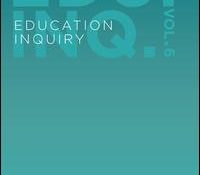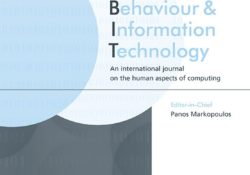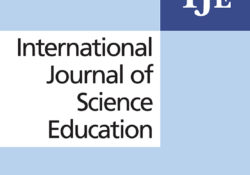tandfonline.com har udgivet en rapport under søgningen “Teacher Education Mathematics”: ABSTRACT ABSTRACT Social networking sites and apps (SNSAs) are being used more frequently across the world and yet the nature of this online environment and associated interactions are not fully understood. With no restrictions for SNSAs use related to specific geographical regions, language, age, gender, educational level, or any other factors, it is important to find a concept to describe and explain the components of this online environment and their relationships. This paper describes the environment of SNSAs use by Saudi postgraduate students from the perspective of second-generation activity theory (AT). The findings supported the theoretical framework of AT as a useful lens in understanding SNSAs use from the perspective of students, particularly in a cultural environment where physical communication… Continue Reading →
Like this:
Like Loading...
tandfonline.com har udgivet en rapport under søgningen “Teacher Education Mathematics”: ABSTRACT ABSTRACT This article presents an analysis of a team-teaching approach, applied in two learning spaces: a regular mathematics classroom; and a hairdressing salon at an upper secondary vocational education and training (VET) school. A mathematics teacher and a VET teacher jointly developed, planned and carried out the teaching activities in these two learning spaces. The overall goal was to prepare their 15 students for professional life. Observations made from the two lessons were analysed with the aim of identifying the extent to which the outcome of the team-teaching approach is dependent on the choice of the learning space. Drawing on Engeström’s activity theory and research literature on learning spaces, our results indicate that tools, norms, division of labour and… Continue Reading →
Like this:
Like Loading...
tandfonline.com har udgivet en rapport under søgningen “Teacher Education Mathematics”: ABSTRACT ABSTRACT In this study, Activity Theory (AT) is used to analyse general patterns for how cultural and historical factors interact with the shaping of science activities in preschools. Data was produced from field notes, video observations, video stimulated recall group discussions and individual interviews with preschool teachers at fourteen preschool units, where science activities were described as a common feature of the practice. Two factors were found to be particularly important for how and whether science learning opportunities were afforded the children: the structure of the preschool community and the type of educational culture within it. In communities characterised by weak mutual commitment and without joint understanding of the purpose of the activities, the science learning objects of the… Continue Reading →
Like this:
Like Loading...

tandfonline.com har udgivet en rapport under søgningen “Teacher Education Mathematics”: ABSTRACT ABSTRACT Developing inquiry-based science teaching (I.B.S.T.) methods in lower secondary schools challenges many schools and educational bodies. The paper addresses the influence of teacher collaboration on science teachers’ approaches and practices regarding I.B.S.T. The research emphasises three case studies: two science teachers, one expert and one new teacher, attending programmes based on teacher collaboration; one experienced teacher without any specific training on I.B.S.T.. Each of the three teachers was videotaped during one classroom session and interviewed about the video directly after the lesson. Their practices were portrayed in terms of the six crucial dimensions and indicators of I.B.S.T. Differences were seen among the three teachers. The two teachers attending programmes based on teacher collaboration employ teaching approaches and practices… Continue Reading →
Like this:
Like Loading...
tandfonline.com har udgivet en rapport under søgningen “Teacher Education Mathematics”: ABSTRACT ABSTRACT The aim of the study is to analyse teachers’ efforts to develop secondary school students’ knowledge and argumentation skills of what constitutes scientific theories. The analysis is based on Leontiev’s three-level structure of activity (activity, action, and operation), as these levels correspond to the questions why, what, and how content is taught. The unit of analysis was a school development project in science education, where design-based interventions were conducted. Data comprised notes and minutes from eight meetings, plans, and video recordings of the lessons, and a written teacher evaluation. The teachers’ (n = 7) learning actions were analysed to identify (a) concept formation in science education, (b) expressions of agency, (c) discursive manifestations of contradictions, and (d) patterns… Continue Reading →
Like this:
Like Loading...
tandfonline.com har udgivet en rapport under søgningen “Teacher Education Mathematics”: ABSTRACT ABSTRACT This article focuses on presenting success factors for a group of teachers in carrying out a learning study in mathematics at their school. The research questions are: what are the actions of the school teaching community during development projects? What factors enable a group of teachers to carry out a learning study at their school? Activity theory provides a holistic framework to investigate relationships among the components present in a learning study. The results are based on analysis of interviews with teachers, students, principal organizers of schools and project coordinators, videotaped lessons, students’ tests and minutes taken at meetings of mathematics projects. The results show that the skills of facilitators, the time devoted to collaborative work, the link… Continue Reading →
Like this:
Like Loading...





